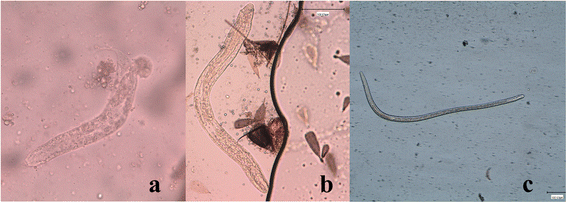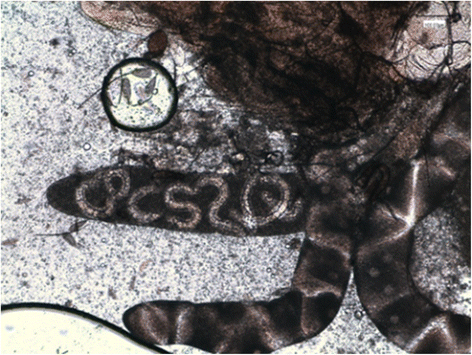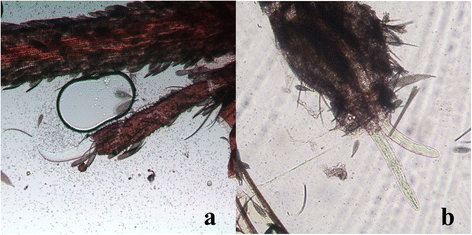Development of Dirofilaria immitis within the mosquito Aedes (Finlaya) koreicus, a new invasive species for Europe
- PMID: 25884876
- PMCID: PMC4382832
- DOI: 10.1186/s13071-015-0800-y
Development of Dirofilaria immitis within the mosquito Aedes (Finlaya) koreicus, a new invasive species for Europe
Abstract
Background: Over the recent decades, container-breeding mosquito species belonging to the genus Aedes have frequently been recorded far from their place of origin. Aedes koreicus was first reported in north-eastern Italy in 2011, in a region endemic for Dirofilaria immitis, the agent of canine heartworm disease. The vector competence of Ae. koreicus for D. immitis was here tested under laboratory conditions, by infecting mosquitoes with a local strain of D. immitis.
Methods: Blood containing 3000 microfilariae/ml was offered to 54 mosquitoes (T group) while 29 were left as a control (C group). Mosquitoes killed at scheduled days post infection (dpi) and naturally dead were divided in head, thorax and abdomen and examined for D. immitis larval stages by dissection under a microscope and molecularly.
Results: Of the 45 engorged mosquitoes in T, 32 (71.1%) scored positive for D. immitis larval stages. L3 were found as early as 8 dpi in the Malpighian tubules and then in the thorax, salivary glands, palp and proboscis. At the end of the study a total of 18 mosquitoes developed L3 giving an estimated infection rate at 12 dpi of 68.2% and a vector efficiency index of 25.2%. The rate of mortality in T group within the first 9 days post infection was significantly higher in T group (47.6%) than in C group (8.3%) (p < 0.01). The concordance between microscopy and PCR was high (0.8-0.9), however, a positivity for D. immitis in the head was found molecularly at 13 dpi, three days before microscopy.
Conclusions: Aedes koreicus, a new invasive species for Europe, is most likely a competent vector of D. immitis being of potential relevance in the natural cycle of the parasite. This poses a new threat for animal and human health in endemic areas for dirofilariosis and enhances the risk of spreading the infection in previously non-endemic areas. These results stress the importance of active surveillance and control strategies to minimize the risk of introduction of invasive alien species.
Figures






References
-
- Lundstrom JO. Mosquito-borne viruses in Western Europe: a review. J Vector Ecol. 1999;24:1–39. - PubMed
-
- Sabatini A, Raineri V, Trovato G, Coluzzi M. Aedes albopictus in Italy and possible diffusion of the species into the Mediterranean area. Parassitologia. 1990;32(3):301–4. - PubMed
-
- Angelini R, Finarelli AC, Angelini P, Po C, Petropulacos K, Macini P, et al. An outbreak of chikungunya fever in the province of Ravenna, Italy. Euro Surveill. 2007;12(9):E070906.1. - PubMed
Publication types
MeSH terms
LinkOut - more resources
Full Text Sources
Other Literature Sources

